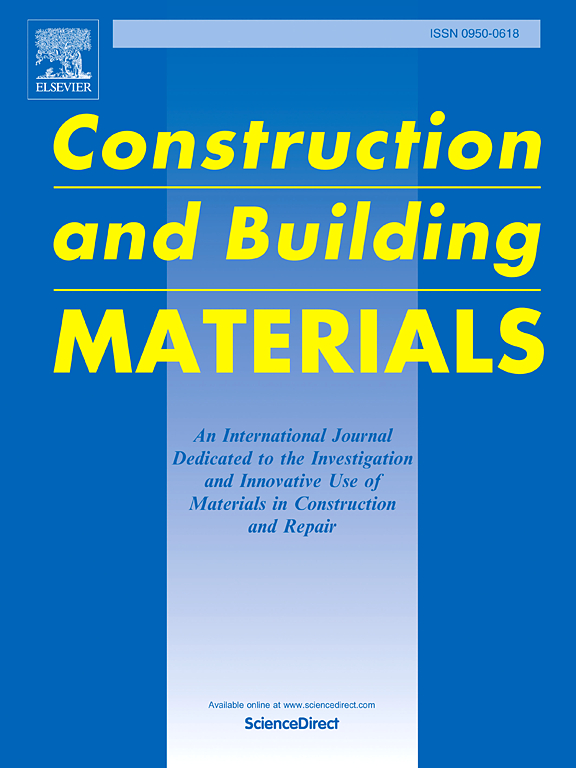Research on the preparation and pore structure of porous brucite-based magnesium phosphate cement
IF 7.4
1区 工程技术
Q1 CONSTRUCTION & BUILDING TECHNOLOGY
引用次数: 0
Abstract
Magnesium phosphate cement offers high strength, excellent temperature resistance, alongside superior bonding properties; but its high density, substantial carbon emissions, and instability in foaming processes restrict its applications in thermal insulation and fire protection. This study employed natural brucite and ammonium dihydrogen phosphate as the base materials for magnesium phosphate cement, while magnesium carbonate, sodium bicarbonate, or sodium dodecyl sulfate (SDS) were used as foaming agents to prepare porous brucite-based magnesium phosphate cement (BMPC). The study focused on investigating the physical and mechanical properties, thermal conductivity, and microstructure of the BMPC. The results indicate that, within the same density range, magnesium carbonate-modified BMPC has the least impact on mechanical properties, while the thermal conductivity can be reduced by 46.6 % and the thermal diffusivity by 110.4 %. The results indicate that, within the same density range, magnesium carbonate-modified BMPC has the least impact on mechanical properties, the proportion of small and medium pores increases, and the fractal dimension is the lowest. BMPC offers advantages such as lightweight, thermal insulation, and low carbon emissions.
多孔水镁石基磷酸镁水泥的制备及孔隙结构研究
磷酸镁水泥具有高强度、优异的耐温性和优异的粘结性能;但它的高密度、大量的碳排放和发泡过程中的不稳定性限制了它在保温和防火方面的应用。本研究以天然水镁石和磷酸二氢铵作为磷酸镁水泥的基材,以碳酸镁、碳酸氢钠或十二烷基硫酸钠(SDS)作为发泡剂制备多孔水镁石基磷酸镁水泥(BMPC)。该研究的重点是研究BMPC的物理和机械性能、导热性和微观结构。结果表明,在相同密度范围内,碳酸镁改性BMPC对力学性能的影响最小,导热系数降低46.6 %,热扩散系数降低110.4 %。结果表明:在相同密度范围内,碳酸镁改性BMPC对力学性能的影响最小,中小孔隙比例增加,分形维数最低;BMPC具有轻质、隔热和低碳排放等优点。
本文章由计算机程序翻译,如有差异,请以英文原文为准。
求助全文
约1分钟内获得全文
求助全文
来源期刊

Construction and Building Materials
工程技术-材料科学:综合
CiteScore
13.80
自引率
21.60%
发文量
3632
审稿时长
82 days
期刊介绍:
Construction and Building Materials offers an international platform for sharing innovative and original research and development in the realm of construction and building materials, along with their practical applications in new projects and repair practices. The journal publishes a diverse array of pioneering research and application papers, detailing laboratory investigations and, to a limited extent, numerical analyses or reports on full-scale projects. Multi-part papers are discouraged.
Additionally, Construction and Building Materials features comprehensive case studies and insightful review articles that contribute to new insights in the field. Our focus is on papers related to construction materials, excluding those on structural engineering, geotechnics, and unbound highway layers. Covered materials and technologies encompass cement, concrete reinforcement, bricks and mortars, additives, corrosion technology, ceramics, timber, steel, polymers, glass fibers, recycled materials, bamboo, rammed earth, non-conventional building materials, bituminous materials, and applications in railway materials.
 求助内容:
求助内容: 应助结果提醒方式:
应助结果提醒方式:


